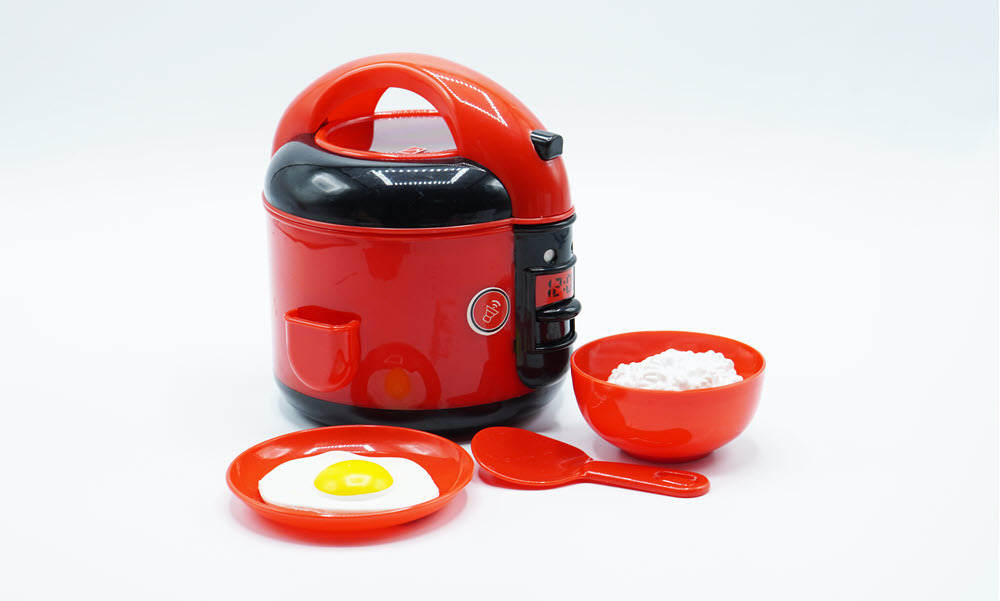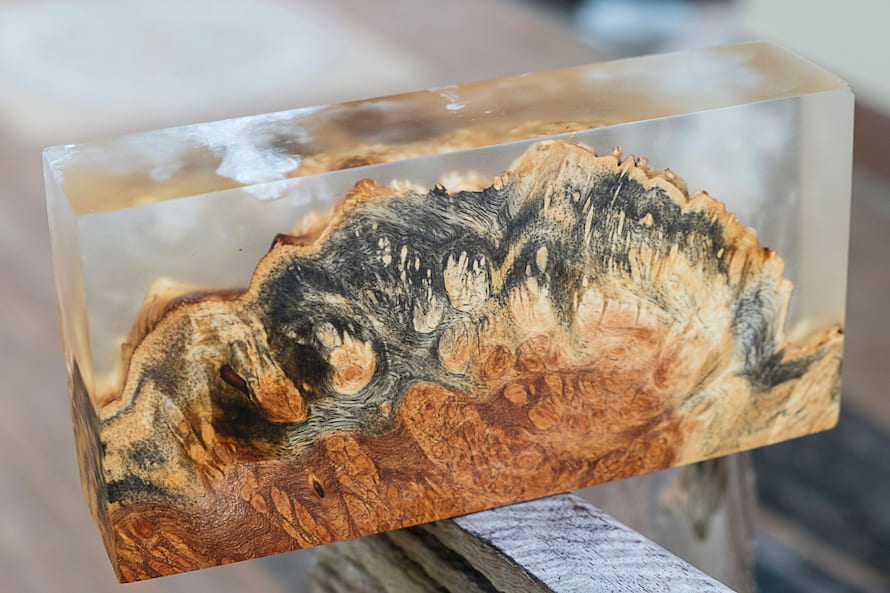If you've been using plastic for some time, you may have observed that some of your earlier creations don't seem to have the clarity of your most recent works; instead, they appear to be somewhat discolored or to have acquired a yellow color.
Despite how frustrating it is, this is a typical occurrence. All plastics will ultimately become yellow, it's a truth! That might take as short as a few months for certain plastics. It can take a few years for others. So why does plastic turn yellow? This procedure happens for a number of reasons. Even while this isn't always a symptom of decline or inferiority in the product, it's nevertheless crucial to understand why it's occurring and how it may be stopped or at least slowed down.
Related:
- What is plastic? Everything you need to know about plastic
- Is plastic chemical resistant? The chemical resistance of plastics
- Chemicals used in the manufacture of plastics

1. Why does plastic turn yellow over time?
1.1. Poor quality plastic
Poor quality plastics are not the only reason for plastic discoloration, but they are a common cause behind the process. Poor quality plastics often do not have UV protection added.
This is why a good quality plastic can be more expensive, but it is 100% worth it if it helps your creations last much longer. These companies will often spend more money on their formulas by adding UV blockers in the form of UV stabilizers and HALS. Many plastics have an internal stabilizer to help minimize this discoloration, but not all forms of plastic products are created equal.
1.2. UV light exposure
Keep your plastic away from direct sunlight exposure to prevent UV radiation deterioration. Include a note in the insert advising your customers to keep their jewelry or works of art out of the sunlight if you are selling them. Continuous sunshine exposure makes plastic more susceptible to yellowing.
Your plastic products begin to degrade as soon as it is exposed to UV light and is struck by the light. And if it is often exposed to extreme UV radiation, you may anticipate that your plastic product will change color or at the very least show visible degradation.
1.3. Using colorants that are not compatible with plastic
The colorants may sometimes be to blame for the plastic becoming yellow. It may be advisable to use the brand's own goods, which are expressly created to work with its products if the brand you are using comes with its own powder colorants. Businesses like EuroPlas have their own colorant lines that pair well with their plastic and are also offered in huge bottles, which will assist minimize yellowing.
1.4. Inadequate amount of additives or fillers
Excessive use of plastic fillers or plastic additives not only affects the mechanical properties of the product, but can also cause discoloration of the plastic product.
1.5. Insufficient heat
The yellowing of plastic is a common side effect of the degradation of polymer chains. This takes place because there is not enough heat (thermal oxidation). Because of this, "yellow bodies" are produced that impart yellow coloration.
1.6. Pollution contact
Pollutants when exposed to plastic surfaces are also a big cause of plastic discoloration. However, most people often do not pay attention to the preservation of plastic products, thereby creating conditions for dirt or foreign objects to stick to the surface of plastic products.
2. Does UV plastic turn yellow?
People often think that UV plastic will be resistant to discoloration, however, this is not really true. In fact, there are still many proofs that UV plastic turns yellow after a certain period of use. However, the discoloration process of UV plastic usually takes place after a long time of use, making many people mistakenly believe that this plastic is not discolored.
In a nutshell, the question of whether or not UV plastic will become yellow cannot be answered with absolute certainty; nonetheless, there is widespread consensus that this will happen to all UV plastics in due course.
3. Does all plastic turn yellow overtime?
Most kinds of plastics are naturally yellow and there is no way to halt it. The amount of time it takes for a given degree of yellowing or deterioration to occur is directly related to the kind of plastic and the application it is used for.
Plastics that are considered to be commodities, such as polyethylene (PE), polypropylene (PP), and polyvinyl chloride (PVC), are in greater danger of discoloration. They are intrinsically unstable and may potentially deteriorate as a result of the procedure if additives are not present.
Carbonyl groups are produced by the oxygen in the atmosphere when ultraviolet light of a certain wavelength is present. Because of this, the color transforms into a yellow-brown hue, and the plastic starts to flake away until it is rendered worthless. In polyethylene films and on polyethylene-coated items, gas fading is a prevalent issue. Pollutants in the atmosphere, such as nitrogen oxides (NOx), may cause a reaction with antioxidants in the substance, giving it a reddish or yellowish hue. Gas fading, as opposed to traditional discoloration, happens gradually over time while being stored.
In applications that are exposed to sunlight, polyesters such as polyethylene terephthalate (PET) and polycarbonate (PC) become yellow. Transparency in clear materials is often diminished for bottlers and compounders. These polymers are vulnerable to UV light from both natural and artificial sources. In the presence of heat, moisture, and oxygen, this sensitivity doubles.
The same is true for nylon (a polyamide) materials that are white or light in hue. Everywhere, even while finishing, storage, and even at home, yellowing might occur. Manufacturers refer to this phenomenon as phenolic or warehouse yellowing. Phenolic antioxidants in packing materials may react with nitrogen oxides in the air. Yellow-able phenols are produced as a consequence, which causes stains or discoloration on fabrics.
20% of all textile output worldwide is made up of "white" textiles. Manufacturers must take the proper safety measures as a result to prevent financial loss from product rejections and customer complaints.
In this respect, recycled PET plastic deteriorates in the sun more quickly. The amount of yellowing is noticeably greater than in virgin PET. This restricts the usage of recycled PET in transparent items and bottles.
4. What plastic does not turn yellow?

Certain kinds of plastics are more resistant to the effects of UV radiation than others, but it will be extremely challenging to locate one that is entirely immune.
A few resourceful businesses have discovered solutions to this issue by including additional components into their plastic compositions to help filter out UV radiation and preserve the clarity of your items for months.
Typically, the common plastics that do not turn yellow overtime are:
- Polyesters
- Polycarbonates
- Polyurethane
- Polyamides
5. How to prevent plastic discoloration?
There is no way to stop the plastic from becoming yellow or from beginning to yellow on the sides. Over time, the plastic will continue to become increasingly yellow. Below are several effective methods that can be beneficial for you during the process of preventing plastic discoloration.
5.1. Use only high-quality plastic
The plastic may be pricey, but if you buy cheap plastic, it will probably start to yellow within a few months at the very least. If you wish to apply colorants to give a less costly plastic a dark color or don't care if it yellows with time, then by all means save your money and use a less expensive plastic. If not, get plastic from a supplier with an excellent reputation for not yellowing.
5.2. Use colorants compatible with each type of plastic
The greatest color selections, which are highly pigmented and created particularly for plastic, may be found at EuPlas. They provide almost any color you want as well as holographic colors. A little goes a very long way.
5.3. Utilize plastic with a UV stabilizer
We cannot emphasize this enough. Remember that UV stabilizers could prevent the plastic from becoming yellow more gradually. However, particularly after many years, they won't totally stop the plastic from becoming yellow.
Every plastic will age gradually over time, while some will age more slowly than others and others will age less dramatically. Look for a plastic whose recipe includes a UV light stabilizer.
5.4. Prevents exposure to moisture and UV rays
Aside from that, ensuring that your plastic supplies have little to no contact with moisture, heat, or air can also aid in avoiding discoloration of the finished product. This is because all of these factors contribute to the breakdown of the plastic's chemical structure.
If you have already applied the plastic, you may avoid discoloration by minimizing the amount of time that it is exposed to UV radiation, either directly or indirectly. For instance, even if just a little portion of product is exposed to sunlight, the stain will still migrate to uncovered areas.
6. Looking for a plastic material manufacturer?
.jpg)
European Plastics Joint Stock Company (EuP) is the world's leading plastic filler manufacturer based in Vietnam. We are proud to offer a unique plastic material solution that helps customers' factories optimize production costs and improve their competitiveness. on the market. EuroPlas is currently providing a variety of plastic additives, bioplastics, color masterbatch, compound engineering plastics, filler masterbatch, and bio filler.
Thousands of client partners from several nations across the globe have confidence in all of Europlas' products and manufacturing methods since they have all undergone quality testing. Utilizing our goods will enable your business to save money, boost production, and improve product features.
Contact us for the earliest advice and support!